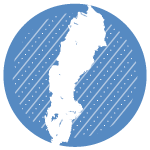The number of UAMs in foster care in Sweden has decreased in the past few years. One reason for this is the fact that the number of UAMs arriving in Sweden has risen steeply and recruiting enough foster families to cope with this rise has proved difficult (the Migration Board expects between 6,800 and 9,200 UAMs to arrive in Sweden asking for asylum annually in the years 2014-2017). Another reason is that most minors arriving are boys aged 14 to 17, who are placed in residential care. The fact that it is not clear in advance to which of the 290 municipalities the Migration Board will send the children also makes it difficult to know where to recruit families. Because of this, it has been easier to accommodate them in residential care. On the other hand, kinship placements have increased for UAMs, resulting in 40% of them living in kinship care today.
Stockholm and Malmö are the cities that have the most experience with providing foster care to UAMs
Malmö
The Municipality of Malmö has a total of 400 children in foster care. There are 120 new placements a year. This number is increasing and, in 2013, 50% of these newly placed children had a non-Swedish background. 30% of the newly placed children who come from other countries are unaccompanied. They are mostly placed in families that are known to them or are related to them, although these are not always suitable foster families. In Sweden they are used to placing (Swedish) children with relatives, but with this foreign group this causes special problems.
As of November 2014, there are 23 children aged 3-17 (most of them 12-14) living in families not known to them. The unit recruits indigenous families as well as non-related cultural families. The foster families with different cultural backgrounds are well integrated into Swedish society in terms of language, work, higher education, etc. These families have had similar experiences as the children with regard to having to start all over again in a new country, and they can support and understand the children in another way than indigenous families can. This makes them good role models and it is the unit’s experience that the results are really good in these families. The unit explained that it all comes back to the assessment of the children’s needs and how to make a good match between the foster family and the child. For some children, an indigenous family works best.
Contact
Malmö stad City council
välfärdsavdelningen
August Palms plats 1
205 80 Malmö
+46 40 34 93 30
www.malmo.se
Stockholm, Rinkeby-Kista city council
Recruiting families in Stockholm is difficult. One of the reasons is that many people feel they do not have the time to take care of a child. Another reason is the fact that many families live in small apartments and do not have room for another child. As a result, children end up in the countryside which is not always in their best interests and also means that social workers sometimes have to travel a long way with a child. The municipality is glad when it finds one family that is good enough for a child. When it comes to UAMs, there is often a family in the area which is prepared to take care of the child.
General training is provided to those who want to be a foster family, and special training is given to kinship/network families. As Rinkeby-Kista city council has a large Somali population, this is the biggest group.
Contact
Rinkeby-Kista stadsdelsförvaltning
Socialtjänst Barn och ungdom
Enheten för familjehemsvård och familjerätt
Borgarfjordsgatan 14, Kista, Stockholm
Mrs. Gunilla Andersson
+46 08 508 01 378
gunilla.andersson@stockholm.se
General information on foster care for unaccompanied minors in Sweden:
Elisabeth Melin,
Sr. Advisor Health and Social Care Division and project partner RLF
Swedish Association of Local Authorities and Regions (SALAR)
Hornsgatan 20, 118 82 Stockholm
+46 8 452 76 04,
Elisabeth.Melin@skl.se
www.skl.se

